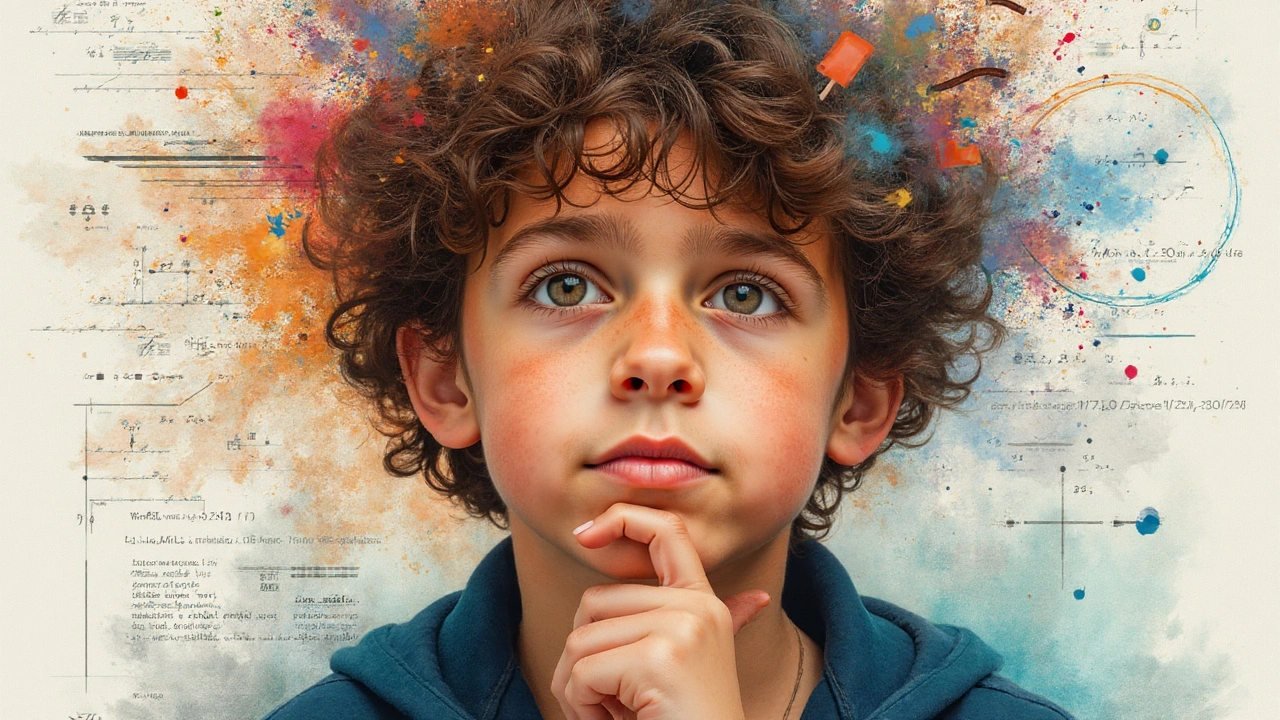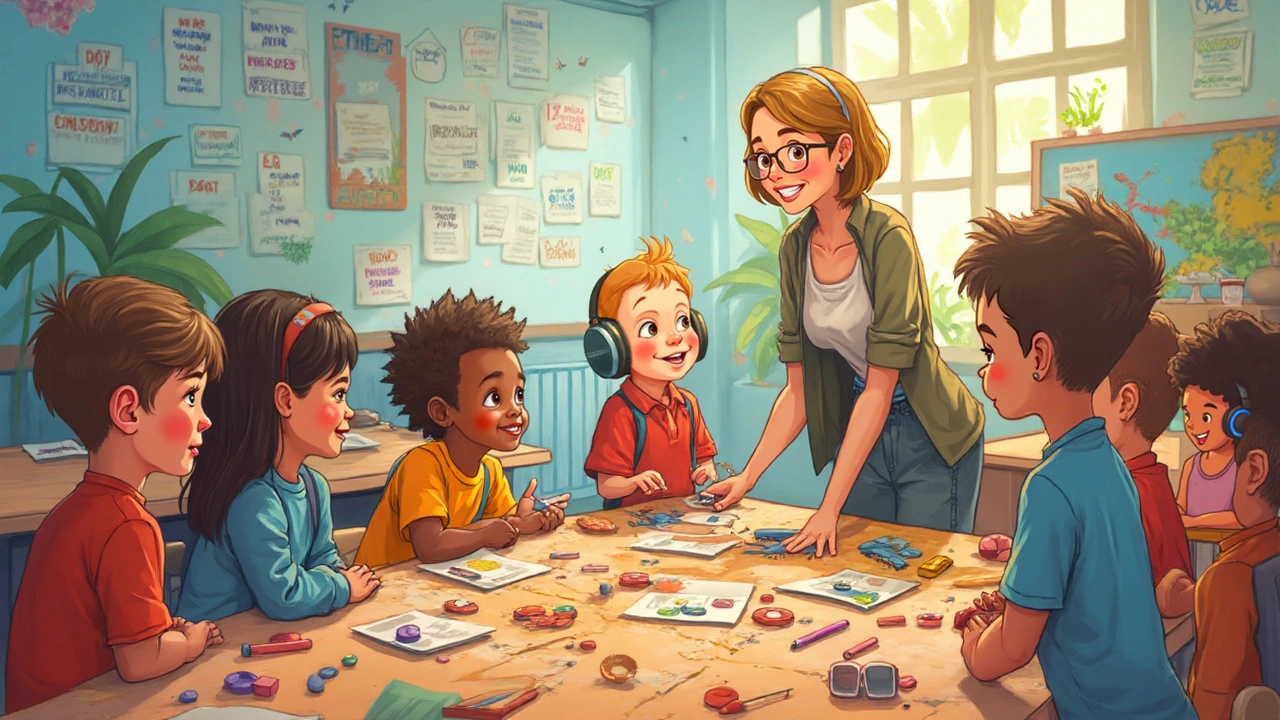Embracing Autism: Celebrating Neurodiversity and Unlocking Hidden Strengths

The world loves categories—like sorting socks or organizing files on a desktop. But people? We’re not meant to fit perfectly into boxes. That’s why the rush to label folks “normal” or “different” often misses the real point: the wild, brilliant range of human minds. Autism, a term that gets thrown around (and sometimes misunderstood), isn’t a glitch. It’s another flavor of the human experience, loaded with its own strengths, quirks, and ways of lighting up the world. If you grew up thinking autism was only about “can’ts”—can’t communicate, can’t socialize, can’t fit in—prepare to have your mind rewired.
Autism Through a New Lens: Shedding the Old Myths
Most of us were handed a pretty dry, narrow script about autism: tons of challenges, not enough opportunities, struggles in school and work, endless therapy sessions. That script, pushed out by the medical system for decades, defined autism as a disorder desperately needing a cure. The numbers get tossed around, like the most recent stat from the CDC—that about 1 in 36 kids in North America is diagnosed with autism. But behind each number is a person with a mind that often refuses to play by the same rules as everyone else.
Here’s what’s fascinating: The term “neurodiversity” didn’t even become mainstream until the late 1990s, thanks to an Australian sociologist named Judy Singer. Neurodiversity flips the old script. Instead of seeing autism as broken, it treats it as a part of the natural range of brain types—kinda like biodiversity in nature. And when you look at autism this way, you suddenly see all the cool stuff that gets filtered out when you only focus on what’s “lacking.”
Let’s bust a myth right out of the gate: Not every autistic person is a math genius or a silent wallflower. Autism lives on a spectrum, which means every story is different. Some folks love routine with a fierce devotion. Some have insanely sharp memories, noticing patterns that would make a computer jealous. Others have a knack for details most of us miss—like instantly spotting the one comma out of place in a ten-page document. Even the much-misunderstood “meltdowns” have a logical root: sensory overload.
And, yeah, there are challenges—communication styles that don’t always overlap with the mainstream, tough sensory environments, the anxiety of being misunderstood. But with a neurodiversity approach, the question shifts from “How do we make autistic people act more ‘normal’?” to “How do we tweak our world so everyone can share their strengths?”
It’s not just theory, either. Harvard carried out a study not too long ago with Fortune 500 companies and found that teams with members who are autistic often outperform typical teams on detail-oriented and creative problem-solving tasks. Auticon, a global IT consultancy that specializes in placing autistic professionals, regularly reports higher accuracy and better product quality from their teams. The strengths hidden under the surface become obvious when they’re not forced to fit a “one size fits all” mold.

Unique Strengths: What Autistic Minds Bring to the Table
The phrase “superpowers” gets tossed around, and for some autistic folks, it fits. Think about how Temple Grandin, a professor of animal science who is autistic, used her visual thinking to reimagine livestock facilities across North America. Her brain doesn’t just process information in words; it visualizes complex systems all at once—a process she describes as thinking “in pictures.” She has helped farmers and animals alike, all because her brain takes a different route.
This isn’t an exception. Research out of Cambridge found that autistic people, as a group, are more likely to spot mistakes in patterns or images way faster and more accurately. That’s why companies like Microsoft, SAP, and IBM make a serious effort to hire autistic folks for jobs in quality assurance, cybersecurity, data analysis, and even creative roles. They’re not doing it out of charity—they see a real competitive edge.
Ever met someone who’s impressively honest? For many autistic people, their commitment to truth can unsettle folks who expect “social white lies.” It’s not rudeness—it’s clarity. Some workplaces are starting to value this straightforward feedback more than ever, especially for roles in IT, engineering, and quality control. You always know where you stand—with no sugarcoating.
Then there’s the “deep dive” focus. Once an autistic person gets interested in something, watch out. They can become experts, gathering details and seeing connections that most people overlook. This is how some of the leading voices in astronomy, chess, computing, and even art have emerged. That level of focus can fuel innovation and creativity, especially in fields that thrive on exactness.
Sensory processing differences can seem like an obstacle, but sometimes they’re a blessing in disguise. The world’s best perfumers, wildlife trackers, sound engineers, and food critics often rely on ultra-sensitive senses—a trait not so different from what some autistic folks experience daily. When those sensitivities are respected (not just “tolerated”), they can turn into valuable skills.
Social networks, too, are changing. Online communities built by and for autistic people make it easier to connect, share advice, or simply vent about weird fluorescent lighting in grocery stores with someone who instantly gets it. The rise of “nothing about us without us” in advocacy circles means that self-advocacy and community voices matter more than ever. This flips the old charity model on its head—autistic people drive the conversation on their own terms.
If you want to nurture these strengths—whether as a parent, teacher, employer, or friend—ask, don’t guess. The best insights come from listening to autistic voices themselves. There’s a mountain of blogs, YouTube channels, creative projects, and research papers written by autistic folks. Trust those lived experiences.
- Encourage focus areas, not just “fixing” weaknesses.
- Make communication options flexible: emails, texts, visual supports, and speech.
- Offer quiet spaces and sensory-friendly adjustments, whether at work or home.
- Support routine, but stay open to new possibilities when the person is ready.
- Respect boundaries, especially when it comes to touch or noise.

Inclusion in Action: How We Can Move From Words to Real Change
Celebrating neurodiversity can’t just be a slogan on a coffee mug or a hashtag during Autism Acceptance Month. Too often, well-meaning campaigns fall into the trap of “raising awareness” without making real changes on the ground. If you really want a society where autistic folks thrive, inclusion needs to get practical.
Lately, schools have played catchup. The best classrooms in places like Victoria and Vancouver are starting to replace “sit still and pay attention” with more flexible approaches—fidget toys, movement breaks, headphones, and visuals. Kids who once would’ve been lectured for stimming (think tapping, rocking, or spinning) now get a chance to regulate their energy so they can actually learn. A few school boards in BC offer teacher training led by autistic adults, not just doctors.
Workplaces are catching on, too, but there’s a ways to go. In Canada, the stats can be downright depressing—over 85% of autistic adults are underemployed or unemployed, even though many are skilled and motivated. But the companies trying new strategies—structured interviews, clear job instructions, and buddy systems—are seeing results. Things change when the interview isn’t a minefield of unspoken rules about eye contact or handshake firmness. Hiring managers who focus on what a person can do, not just how smoothly they talk, end up finding talent everyone else missed.
Real inclusion means easy access to sensory-friendly spaces—from shopping malls lowering music and dimming lights during “quiet hours” to sports centers offering noise-cancelling headphones at games. After all, how many times have you ducked into a public bathroom just to get away from the chaos for a minute? For folks on the spectrum, that overload is a daily challenge. Small changes make a difference.
But everyday acceptance is where the magic really happens. It’s neighbors swapping gluten-free donut recipes for an autistic kid with celiac, or friends ditching busy bars for quiet game nights. It’s family members who learn to text instead of call, or coworkers who know that headphones mean “busy” not “rude.”
For anyone who wants to step up, here’s a quick list:
- Ask about, and respect, communication preferences—never assume.
- Ditch outdated language like “suffering from autism”—it’s not a disease.
- Promote leadership by autistic people in advocacy, planning, and research.
- Support inclusive hiring and mentoring initiatives at your workplace.
- Keep learning—join events, follow autistic creators on social, and read books by autistic authors.
- Speak up when you hear stereotypes or jokes—silence is never neutral.
This is about more than tolerance, or even “acceptance”—it’s about genuine curiosity and respect. Trust me, the world doesn’t get less interesting when we open our eyes to every mind’s possibilities. No two brains are alike, and that’s our strength. The future is woven from stories—but only if we make room for every voice, every strength, and every way of seeing the world.
Conor Forde
August 7, 2025 AT 09:45patrick sui
August 8, 2025 AT 00:50Declan O Reilly
August 9, 2025 AT 18:17Matt Dean
August 10, 2025 AT 21:31Walker Alvey
August 11, 2025 AT 03:09Patrick Smyth
August 11, 2025 AT 14:17Linda Migdal
August 12, 2025 AT 05:22Tommy Walton
August 14, 2025 AT 03:49James Steele
August 15, 2025 AT 04:01Louise Girvan
August 16, 2025 AT 17:53Shannon Gabrielle
August 18, 2025 AT 10:14ANN JACOBS
August 19, 2025 AT 20:12Sean McCarthy
August 20, 2025 AT 09:15